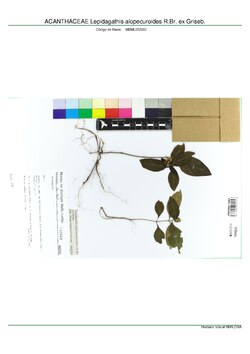| Pata de gallons | |
|---|---|
 | |
| Scientific classification | |
| Kingdom: | Plantae |
| Clade: | Tracheophytes |
| Clade: | Angiosperms |
| Clade: | Eudicots |
| Clade: | Asterids |
| Order: | Lamiales |
| Family: | Acanthaceae |
| Genus: | Lepidagathis |
| Species: | L. alopecuroidea |
| Binomial name | |
| Lepidagathis alopecuroidea | |
| Synonyms [1] | |
| |
Lepidagathis alopecuroidea, synonym Teliostachya alopecuroidea, [1] the pata de gallina, [2] is a plant with a wide distribution in the Americas (from southern Mexico to northern Paraguay) and Africa (from west tropical Africa to east Tanzania and Angola). [1]